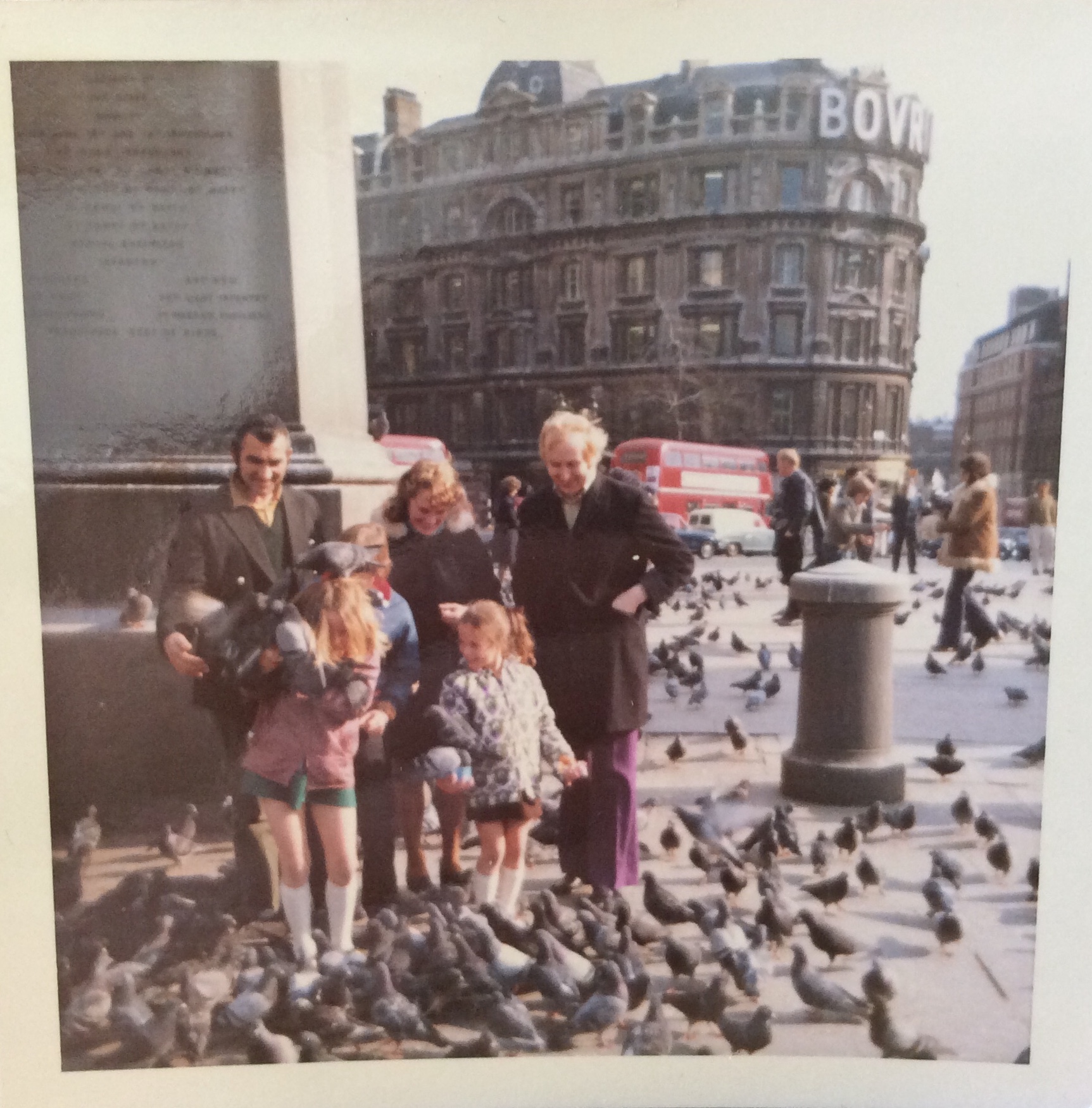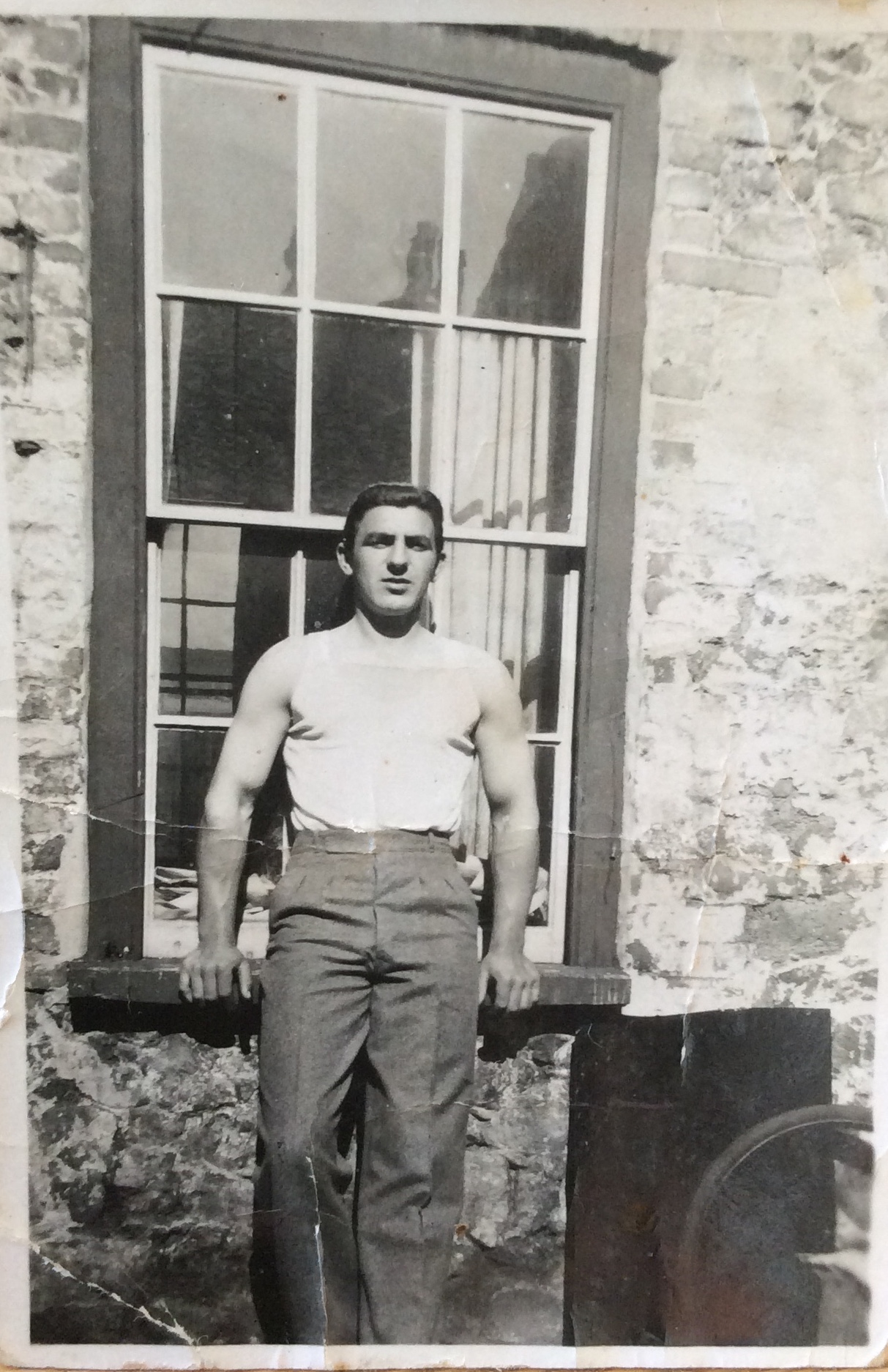On Friday the 25th of September, our photography class visited Tom Pope’s recent exhibition. It was called ‘I Am Not Tom Pope, You Are All Tom Pope’. In the building, he had a total of 21 works. Here’s a picture of Pope giving a speech on his outcomes:

Tom quoted in this exhibition letter: ‘My practice does not make artwork for a community, it creates a community through the act of making’. I think what he means is that he brings people by doing what he does. He is probably inciting that he isn’t the sole producer of the work, rather, community members have a big part to play. In that, everyone’s brought closer together under the name of visual arts. Here’s the letter:

He also displayed a rather long film, around 20 minutes or so. Pope and many other volunteers from all around Jersey, helped to push a small boat across the island. The film was entitled ‘The Last Portage’. Portage defined as: the practice of carrying a water craft or cargo over land, either around an obstacle in a river, or between two bodies of water. The boat was then placed on a slipway and pushed out to sea by Tom. The aim was for the boat to sail in the Atlantic ocean. Surprisingly, Pope then had to phone the coastguards to alert them that a ‘lost’ boat was at sea. The footage was displayed in a dark room, here’s a picture I took of the screening:

At the end of Tom’s presentation, I took some pictures. Here’s his collection from the first room:
This picture above, shows an upside down woman holding a reflected shoe on her heel. The background of the image is pitch black, so that the girls legs stand out. I think that this picture is quite bold. The subjects in this photograph are quite off balance. This is because there’s a massive void of empty space on the right hand side. For me, this creates interest and mysteriousness. Also the rule of thirds are rather strong. The legs intercept the two hot-spots and are aligned with one of the vertical lines.
This picture shows a portrait of a woman on the beach. She’s wearing a leopard skin bikini and has had a face altered on top of hers. The face is actually from the Jersey Archive and Pope’s cleverly placed it onto her body. I think that this hides her emotions and is a sort of disguise. Compositionally, it’s great. The woman is directly in the center of the frame and the sea behind her creates a vertical overlap with her. Also, her stance is strong and tall.
Tom Pope is actually featured in this one. This self-portrait shows Pope being painted by another man. His expression looks surprised and the painter looks focused. The way that Tom’s arm has been cut off on the right hand side, leads me to look at it. This image also has a pretty good amount of depth to it. The painter in the foreground creates shadows on Tom, which then creates shadows on the background wall.
Here, a man appears to be climbing on a statue. This was taken during the night, so it’s likely that a flash camera was utilized. In all, there is a lot going on in this picture. From the street signs on the side, to the cool statue and the man trying to stabilize himself. It looks like it was taken in an amateur man, because the elements aren’t that well aligned. Nevertheless, I believe that that makes it more intriguing.
Lastly, these two images were placed together. In the left one, a night scene has been captured, where someone seem to be holding a hockey stick. The man pictures was probably playing hockey whilst someone was snapping pictures. The image on the left is of a girl on a cylinder shaped structure. It looks as if she jumped on it and is now grabbing on. The way she’s holding on, somehow reminds me of a bear climbing a tree. The striped background works well, as it creates depth and leading lines.
If you notice, all of the pictures were framed with a bright orange frame. When asked why he did this, Tom said that he simply liked the color. He also said that it paint the pictures stand out and that he has presented his work like this in the past. For instance, when he photographed oranges, he’d normally frame in in that color. It could also relate to Baldessari’s work.
In this room, Pope had also displayed a blue podium. The color was bright blue and it stood out quite a lot. Pope stated that he chose this color to create a contrast against the white images on it. He said that it wouldn’t be as interesting to look at, if the podium was just plain white and i agree. The podium is cut at exactly one meter by one meter, making a perfect square. The way that he presented the images is also quite exquisite. Tom said that he would grab a picture and hold it up, at about one meter from the ground. He would then drop the image and simply leave it to land, whether it be upright or face down. Again this incorporates his love for performance photography. In this medium he performs something and records it, with the camera.
Here’s his collection from the second room:
Tom then gave us an insightful speech about his idea behind this part of the exhibition. There were various cutout faces placed on posts. The portraits were in black and white and so were the pieces placed on the tables. Pope said that the faces were actually from the archive. He added that this project was about distributing the archive out into jersey, which he did by photographing them. I think it’s great because he’s bringing the past and present together, to create new images.
Below are some close-ups of the masks. The eye’s have been cut out so that people can wear them:
On the tables, Pope displayed these pictures. He used a coin method to create these interesting holes. Basically there’s one picture on top of the other. Tom used a regular coin and placed it in a desired place. He then cut out the shape and left a gap for the photograph underneath to shine through. Again, a coherent theme of combining pictures is apparent here:














































